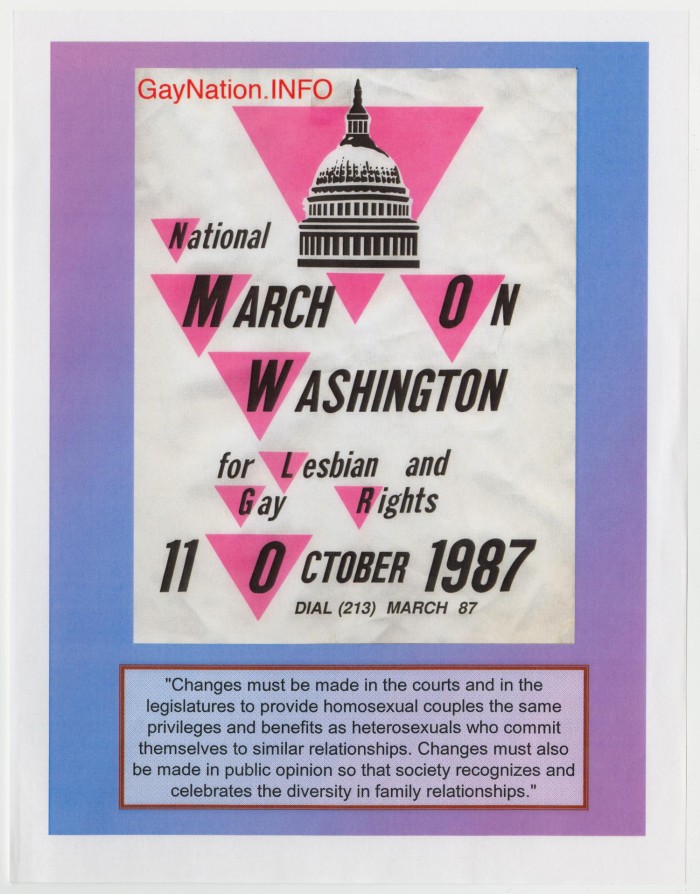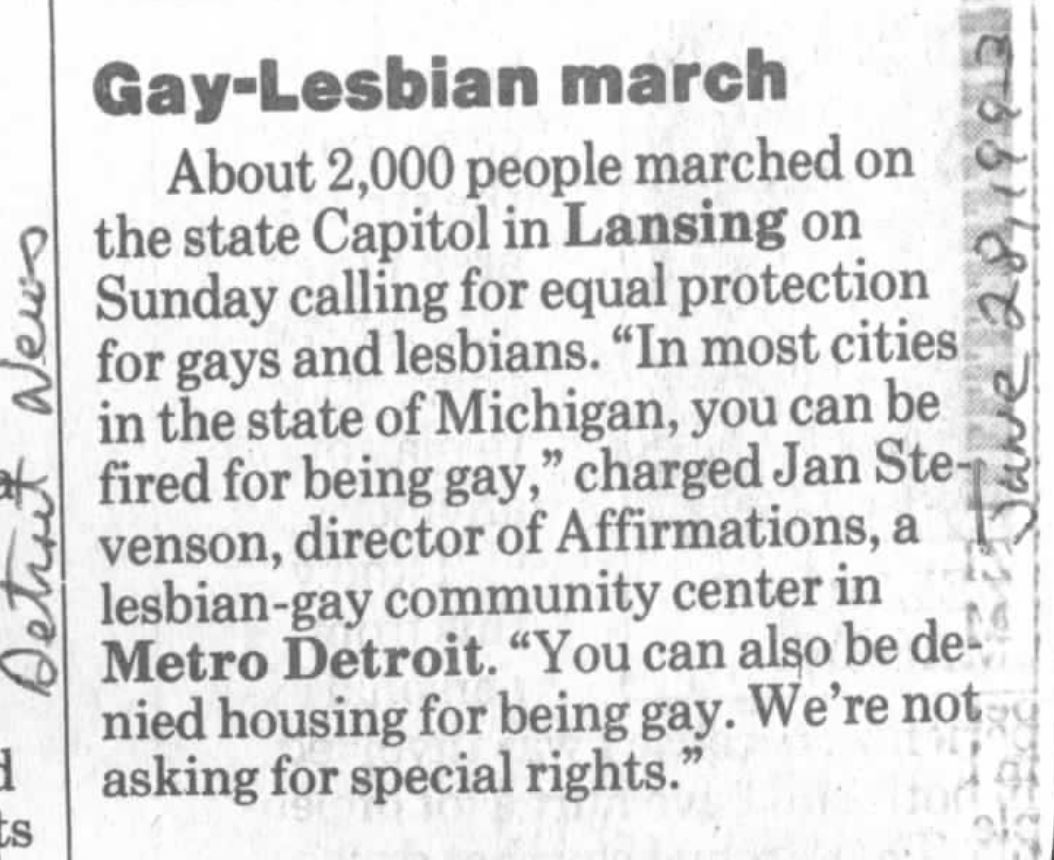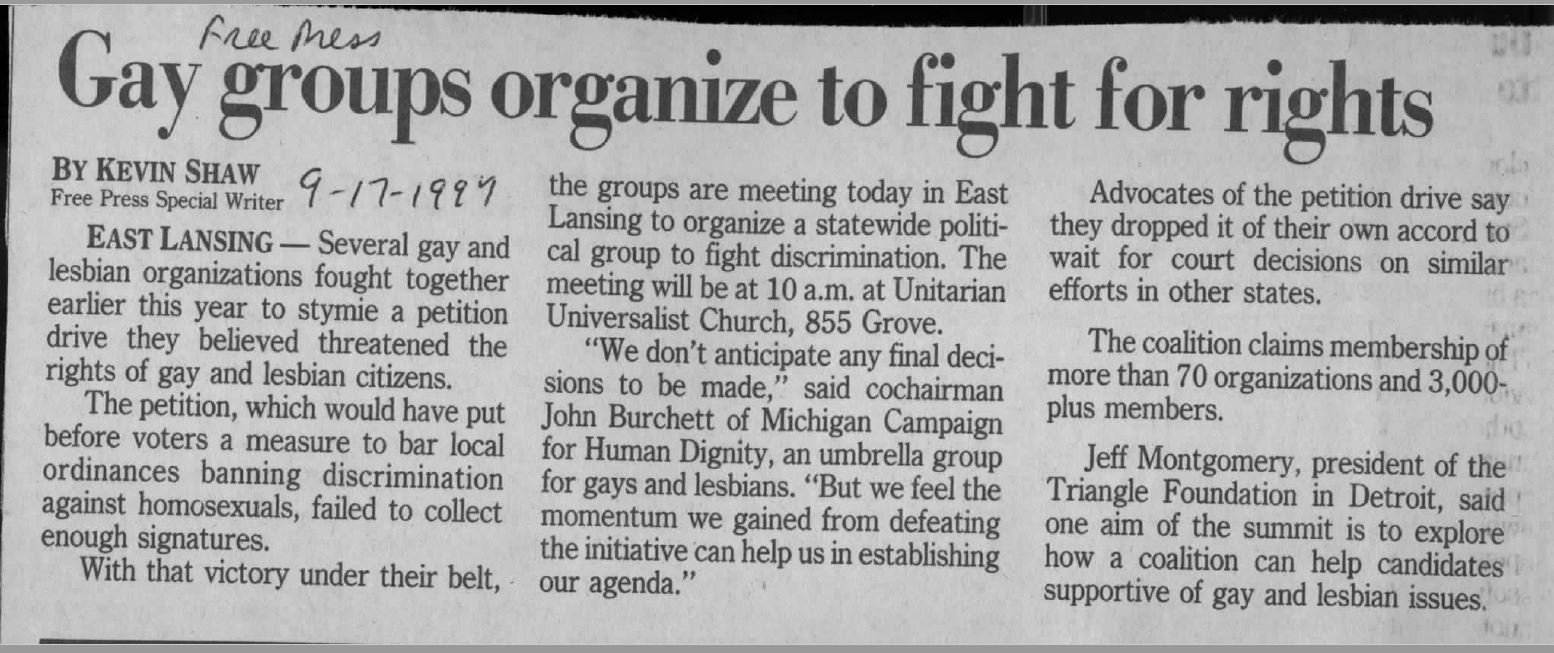Teacher Plan
Note to teacher: You may wish to spend a few minutes establishing guidelines for a respectful and open dialogue in the classroom with students. Throughout this lesson there may be terms students are unfamiliar with. Students may highlight these terms for further explanation.
Learning Objectives
This lesson will ask students to think about the LGBT fight for civil rights as an extension and continuation of the African American fight for civil rights that led up to the 1964 Civil Rights Act.
This lesson falls under Michigan Social Studies Standard 8.3.4, Civil Rights Expanded.
Pre-Assignment (15 minutes)
Have the class view the following clip from MSNBC to review the 1964 Civil Rights Act.
https://www.youtube.com/watch?v=6x0l_vkjozc
After viewing the clip, have students discuss the following:
What rights were granted and protected under the 1964 Civil Rights Act?
Who was protected under these rights?
Who was not protected under the act?
Legislation referenced in this lesson:
The Civil Rights Act of 1964
-Outlawed discrimination based on race, color, religion, sex, or national origin. It prohibits unequal application of voter registration requirements, and racial segregation in schools, employment, and public accommodations. Sexual orientation and gender identity were not included in this act until 2020.
The Elliot-Larsen Civil Rights Act
-Passed in 1977 in Michigan. This act prohibits discrimination in Michigan on the basis of religion, race, color, national origin, age, sex, height, weight, familial status, or marital status in employment, housing, education, and access to public accommodations. Sexual orientation and gender identity were not included in this act until 2018.
Additional Resource:
The following video (5 minutes) can be used after the pre-assignment to guide students into a discussion about LGBT civil rights. This video could also be shown after the lesson to demonstrate the continued fight for LGBT rights in our country. This video from 2015 discusses how it was still legal to discriminate on the job on the basis of sexual orientation and gender identity.
https://www.youtube.com/watch?v=YCjDnX-Xzhg
Activities you can use during lesson:
Think, pair, share
Have students break into groups and assign each group one document. Have each group analyze the document they were assigned and discuss the following questions.
-Who made the document?
-What is the perspective?
-How does what we know about this time period impact how we understand the document?
-What do we not know about the document?
-What voices are not represented?
Entry & Exit Tickets
Before the lesson, ask students what their understanding of the lesson topic is.
After the lesson, collect feedback on the students' understanding and provide an opportunity to reflect on what they have learned. A possible prompt is "What questions do you still have about today's lesson?"
Document Timeline
1987 March on Washington
In October 1987, tens of thousands of LGBT civil rights supporters marched on Washington to demand civil rights equality. MOHR (Michigan Organization for Human Rights) organized buses for Michigan activists to attend the march in Washington. This was the second March on Washington to fight for LGBT rights, with the first taking place on October 14, 1979 drawing between 75,000 and 125,000 gay men, lesbians, bisexuals, transgender people, and straight allies to demand civil rights.
Activists at the 1987 march demanded legal recognition of LGBT relationships, the repeal of sodomy laws, a ban on discrimination by the federal government, increase in funding for AIDS education and research, and an end to racism. The above flyer points out that the LGBT fight for civil rights has always been closely related to racism and sexism and the fight against racism. "None of us will be free until we are all free". Organizers of the march called on supporters to confront racism on all levels both within the movement, and in the larger society. The fight was for social, economic, judicial, and legal justice for people of every race, age, gender, ability, class, ethnicity, faith, political ideology, and sexual orientation.
1993 March on Washington
In April 1993, LGBT activists marched on Washington for the 3rd time. The above article states that organizers expected up to 1 million people to attend the march. Specifically, "Burchett, one of the local organizers, predicted that the Michigan contingent will be at least 10,000 strong."
Activists specifically wanted federal legislation extending protection of the 1964 Civil Rights Act to homosexuals. This image shows the Michigan contingent marching at the event. Signs of support can be seen from Detroit, Ann Arbor, Flint, and Marquette.
Gay-Lesbian March
In June 1993, LGBT activists marched in the state capitol in Lansing. Roughly 2,000 people attended calling for equal protection for gays and lesbians. In 1993 in Michigan employers could legally fire someone for being gay. LGBT persons could also be denied housing for their sexuality. These protections were included under the 1964 Civil Rights Act, but it did not apply to sexual orientations until 2020. This protection was also included under the Elliot-Larsen Civil Rights Act passed in 1977 in Michigan, but again it did not include sexual orientation or gender identity as being protected until 2018.
Gay groups organize to fight for rights
In September 1994, a political group was formed to fight discrimination in Michigan. The coalition claimed membership from more than 70 different organizations and over 3,000 members. The goal of the coalition is to help political candidates supportive of gay and lesbian issues.
The continued fight for LGBT rights in Michigan
In December 2003, Michigan Governor Granholm issued an executive order prohibiting employment discrimination in state-level public sector employment on the basis of sexual orientation. The order only covered employees of the state of Michigan and did not cover public sector employees of county, school, or local-level governments. In November 2007, the governor extended her order to include gender identity.
In September 2017, LGBT activists asked Michigan civil rights commission to declare sexual orientation and gender identity discrimination a form of sex discrimination and as such outlaw it under the Elliot-Larsen Civil Rights Act. On May 21, 2018, the commission approved this vote, making LGBT discrimination illegal under state law.
In March 2018, the US court of Appeals for the 6th circuit (covering Kentucky, Michigan, Ohio, and Tennessee) ruled that Title VII of the Civil Rights Act of 1964 prohibits employment discrimination against transgender people under the category of sex. With this decision, discrimination in the workplace based on gender identity was banned in Michigan.
In January 2019, Michigan Governor Whitmer issued an executive order prohibiting discrimination on the basis of both sexual orientation and gender identity in all areas of state government employment, including by employers receiving contracts and in grants from the state.
Sexual orientation and gender identity were not included under the Civil Rights Act of 1964 until June 2020 when the Supreme Court of the United States voted in favor of Bostock v. Clayton County, GA.
An additional resource for teacher is "Understanding and Teaching U.S. Lesbian, Gay, Bisexual, and Transgender History" by Leila Rupp and Susan Freeman. ISBN 978-0-299-31304-3.





